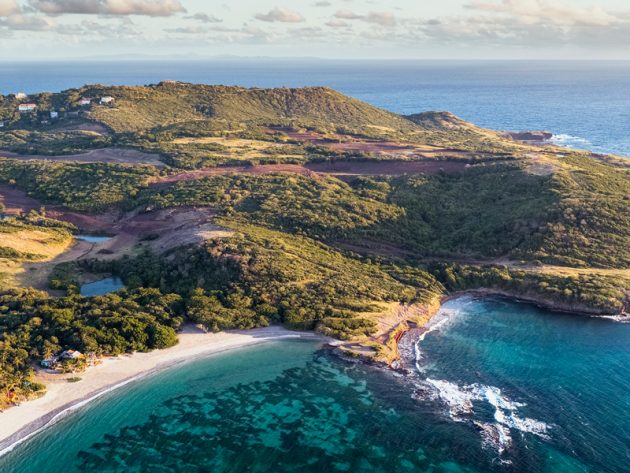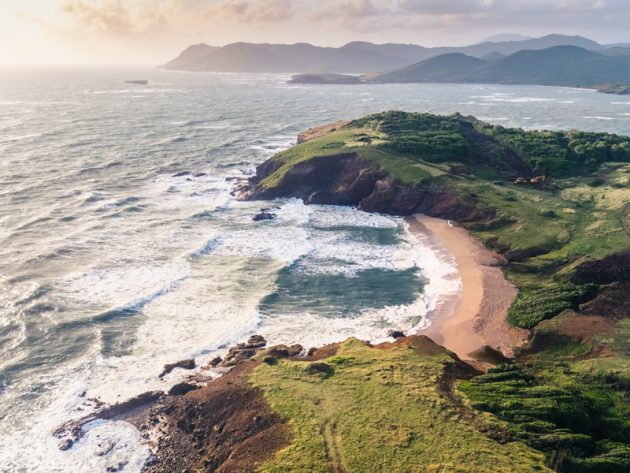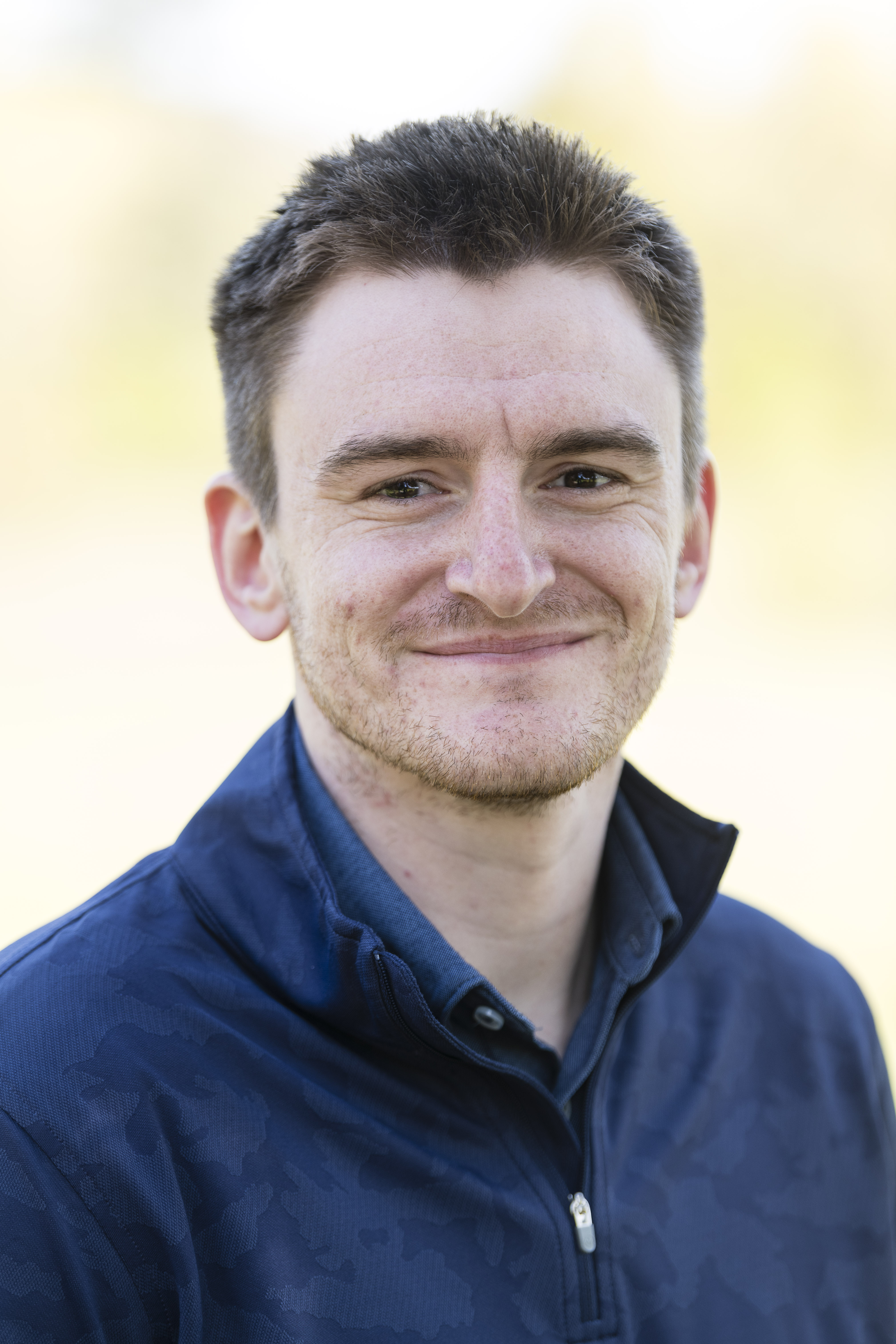Bill Coore Exclusive Interview
We caught up with one of the best golf course architects in the business.


We caught up with one of the best golf course architects in the business.
Bill Coore Exclusive Interview
Bill Coore and Ben Crenshaw have become one of the best golf course design teams in the world and have an outstanding resume that includes completely new creations like Sand Hills (pictured below), Friars Head, Cabot Cliffs (pictured above) and many more designs.

They have also done outstanding restoration work at places like Pinehurst No.2, Riviera, Old Town and more.
We recently managed to interview Bill Coore to get his thoughts on past projects, his design philosophy, and the teams new design creation, the spectacular Cabot Saint Lucia is set to be finished in 2022.
GM: So first could you give some background of your career in golf, how did you get into golf and architecture?
Bill: Well I was a kid growing up in America, I grew up in North Carolina about an hour and a half away from Pinehurst actually. My next door neighbour played golf and as a small kid I would quite often go caddie for him and then thereafter he would hand me a golf club or two.
Subscribe to the Golf Monthly newsletter to stay up to date with all the latest tour news, equipment news, reviews, head-to-heads and buyer’s guides from our team of experienced experts.
So I would just hit balls around and he and I would make up our own courses sometimes. I later went and played in school a bit although not very much in college at Wake Forest.
GM: Was there a particular course or experience that made the light bulb go off for you in terms of architecture?
Bill: Well it would have been the two courses that would be foremost in terms of creating my awareness in both interesting golf and challenging golf certainly from my perspective.
The first was Pinehurst, primarily number 2. I played a fair amount as a kid, and in the summer they would keep two courses open and back then you could play for $5 and you could play as much golf as you wanted.
Then when I went to Wake Forest so it was the Old Town course, which is a Perry Maxwell design that lies immediately adjacent to the campus.
GM: Would you say the restoration work you did on Pinehurst was the most difficult job you’ve had?
Bill: Certainly from a restoration standpoint it was very difficult purely because of the scale of it. Every hole was touched and completely changed, the appearance, the character and in many ways the playability too. The golf course was altered in many ways.
At a lot of these clubs, the Oamont’s, Seminole, Cypress Point, the changes are very very minimal, but at Pinehurst it encompassed the entire golf course.
I remember one story, I was walking out, we were in the process of removing turf and one gentleman stopped me and said ‘you’d better not mess this up because if this golf course goes, so goes this whole town.’ He then turned and walked away and he was not alone in thinking this.

GM: So how did the partnership between yourself and Ben come about?
Bill: We met in 1984, 2 or 3 months after he won his first Masters. I was with a project manager at a proposed project in Texas who said 'why don't you work with a well-known professional'. To stop the conversation I threw Ben's name out as he'd just won the Masters and he seemed knowledgable about architecture.
This man took it upon himself to get us to meet which he did. This man got us together only in the hope that we would work together on his project which was unworkable though. We then spent the next few years becoming friends really.
We didn’t have any intention of working together early on but it evolved from being introduced to more of a friendship. And then at some point saying why don’t we try one of these things together.
GM: How do you compliment each other in terms of style, ideas? Are you pretty similar?
Bill: Its not a yin and yang thing, but instead we start with a big area of common ground in terms of what we like in golf courses and what we might envision on a piece of ground.

When Ben was still playing I would most often do the routings, and then Ben and I would walk those potential holes and make our selections.
Then we would talk about the concepts of the holes together and we’d give those concepts or directions to the guys we work with. From that we would watch those concepts evolve on the ground and we both believe small features can be as influential as giant ones and we both believe if you find a site with inherent character, you then do as little to it as possible.
GM: How has your philosophy changed over time?
Bill: Not that much really. We add in hazards, contours and kinds of things but we try to do everything within the context of what we see out there naturally on the ground. That has always been pretty much our philosophy and our method.
We try to let the site dictate the routing first of all and we’ve always also believed that the more options you can give players, the more interesting the holes will be, so we try not to dictate how anyone will play a hole.
GM: What is the design you are most proud of?
Bill: Oh man, people in our business, you almost can't pick one thing. I am going to defer in a sense as there is truly not one I would pick over others.

When you've had sites to work with like the Sand Hills and Friars Head, and Lost Farm and Bandon, Sheep Ranch, how could I possibly pick one over another?
And then I go to places years ago like Old Sandwich, or Colorado Golf Club or other places, I look through these and think, this is pretty good!
GM: So you mentioned you've had a lot of great sites, it appears you have another in Cabot Saint Lucia. How did the idea come about for you and ben to design a course in Saint Lucia?
Bill: So it is mainly because of Ben Cowan-Dewar, the managing partner of Cabot Links. It was Ben’s idea to do a sister facility in the Caribbean, for good reason because people can't really go to Cabot Links in the winter. He asked us to study the site and do the course.

GM: The routing looks spectacular. What were the challenges of it?
Bill: Well beyond Covid, the primary challenge was taking advantage of as much coastline as we could, very similar mindset to Sheep Ranch, Bandon and Cabot Cliffs. Trying to use the ocean as much as possible because we all gravitate towards the ocean.

Marrying the holes along the ocean, with the holes that had to be inland of that was another challenge. Finding a way to marry the natural holes with the dramatic ones was a challenge to say the least in terms of routing.
Also, possibly the biggest challenge actually was, there is no way to make it as playable as it is visually dramatic because it is going to be one of the most visually dramatic courses in all of the world. How do we make the enjoyable playability factors live up to the visuals. We don't really have to worry about making anything dramatic, Mother Nature has given us that beyond imagination.

GM: So the visual aspects of the place are what make it stand out and will separate it from your other projects?
Bill: Well I would say, you could make an argument that this is the most visually dramatic site with which we have ever worked and that is saying A LOT. We are about to work in New Zealand, on a public access course in Tara-iti, in the dunes on the ocean but it is different. It is stunningly beautiful and adaptable for golf. Is it as visually stunning as Cabot Saint Lucia? Most people would probably say not.

Golf Monthly also caught up with CEO and Co-Founder of the Cabot brand, Ben Cowan-Dewar to get his thoughts on the new project.
Ben: Saint Lucia is a physically beautiful island known for these towering pinnacles that sort of rise out of the ocean. So I think the site immediately is the best site we are going to find in the Caribbean and hopefully the world for golf.
Then it was really about getting Bill and Ben to agree to do it which thankfully they did.
It's Bill and Ben’s first foray into the Caribbean and a site that I think Bill said was the most spectacular that he has ever worked on which is certainly saying something given their resume.

The site is so spectacular and from a golf standpoint, the land sort of does what you want it to do at every point. The site has all of these, sort of parcels that jut out into the water and create these heroic carries. You couldn't ask for more dramatic coastline and more dramatic land to start with.
Cabot Point will be finished in 2022 and there are pieces of property available to purchase. Phase one lots range in size from 9,000 to 22,000 square feet with pricing from $750,000 to $2.6 million. Cabot Saint Lucia will also include a variety of built product across Beach Villas, Hilltop Flats, Ocean View Villas, Luxury Beach Flats, Garden Townhomes, Hillside Flats and Hillside Townhomes.
For more exclusive content do not forget to follow Golf Monthly on Facebook, Twitter and Instagram.

Sam is Golf Monthly's Senior E-commerce Editor which mean's he oversees everything E-com related on the site.
This takes the form of creating and updating Buying Guides, reviews, and finding bargain prices for deals content.
Working with golf gear and equipment over the last seven years, Sam has quickly built outstanding knowledge and expertise on golf products ranging from drivers, to balls, to shoes.
He combines this knowledge with a passion for helping golfers get the best gear for them, and as such Sam manages a team of writers that look to deliver the most accurate, insightful, and informative reviews and buying advice. This is so the reader can find exactly what they are looking for, at a good price.
Additionally Sam oversees Golf Monthly voucher/coupon content which seeks to find you the best offers and promotions from well-known brands like Callaway, TaylorMade and many more.
Unfortunately, Sam is not a member of any club at the moment but regularly gets out on the golf course to keep up the facade of having a single-figure handicap.